Jean-Yves's box joint jig
Jean-Yves built a mirror image version of the box joint jig to better fit his table saw.Jean-Yves writes:
On my 1969 LUREM, I have barely 15 cm on the left and 50 cm at the right side.
Moreover, the bar is only a straight gap on the table so the guide bar is not a t-slot one that is supposed to hold the jig.
It must be kept as stable as possible on top, so I changed the design to be mostly on the right side.
Seyler added a fence to help keep all the boards aligned to the left. Normally, it's desirable to keep the boards as far right as possible, but with Seyler's jig a mirror image of the design, it makes more sense to have a fence that pushes the boards left as far as possible.
Seyler writes:
The most useful addendum (at least for me) is the white "ruler" :
In fact, I use the jig only with a "regular" 3.1mm blade. Here in France, we don't use dado blades.
The solution you proposed to make
multiple cuts with regular blades works quite well but
needs (much like knitting ;-) to count and not miss the numbers!
I chose to rely on marks on the ruler rather than on my memory : the arrow means a cut through the blade,
the figures are the number of gear turns...
I computed several finger gaps from 6 to 25mm and built 2 rulers that can be flipped front to back
and upside-down. That makes 8 possibilities.
The arrow is also moveable so you can choose to begin by a finger or a void. The arrows are for counting the turns only. The exact position is determined by the gears and screws.
See also:
Back to screw advance box joint jig
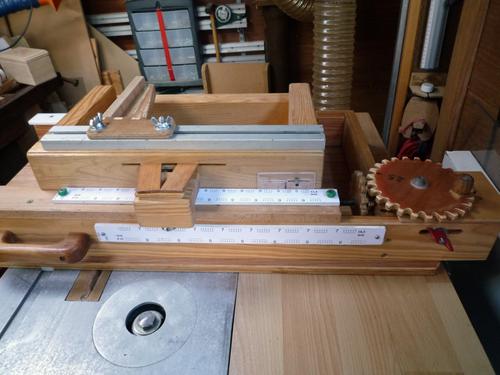
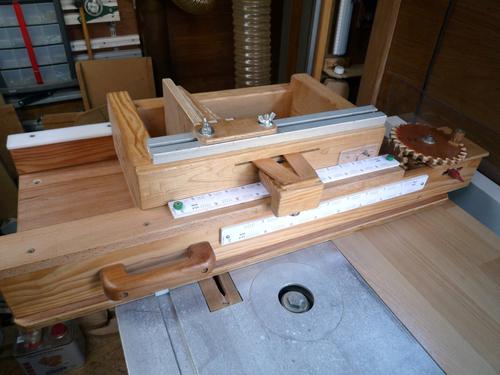
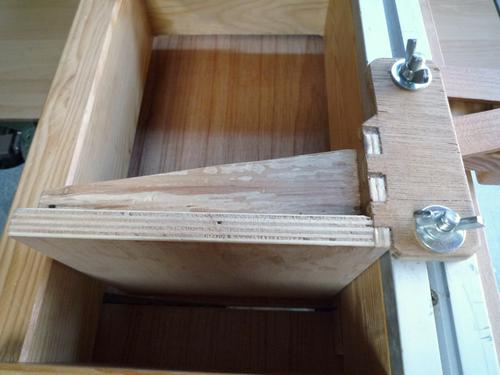
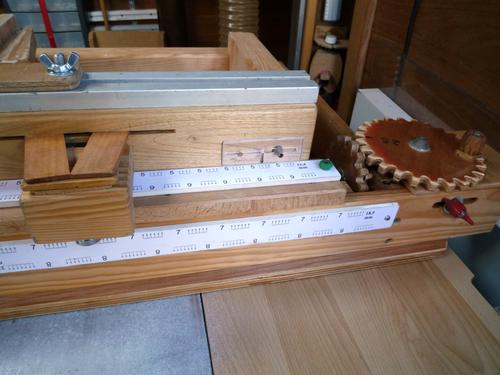
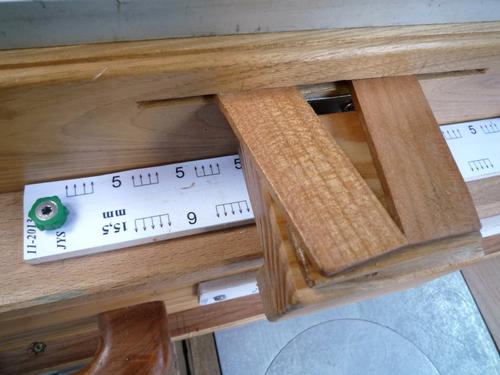
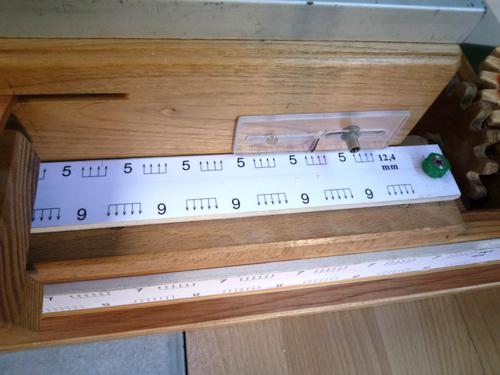
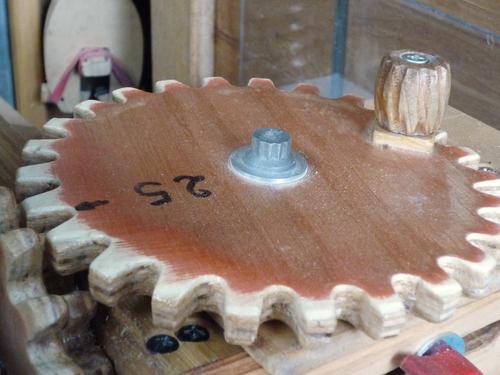
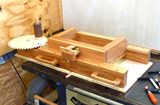 Earl Davidson's
Earl Davidson's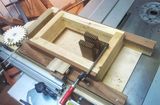 Elyasaf Shweka's
Elyasaf Shweka's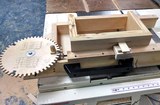
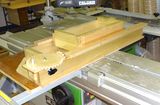
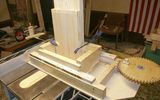
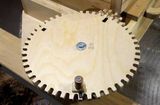 Cutting box joints
Cutting box joints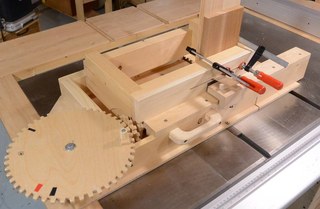 Screw advance
Screw advance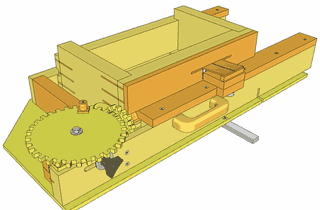 Plans for the
Plans for the